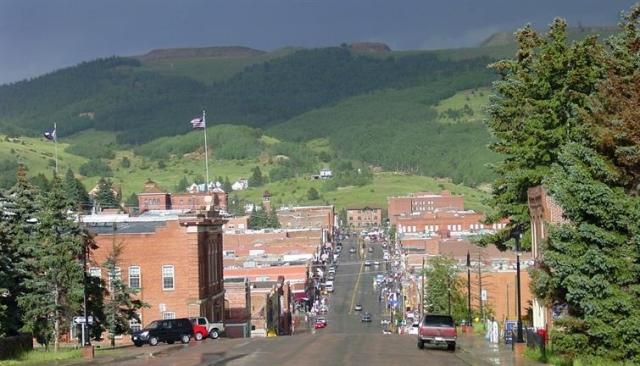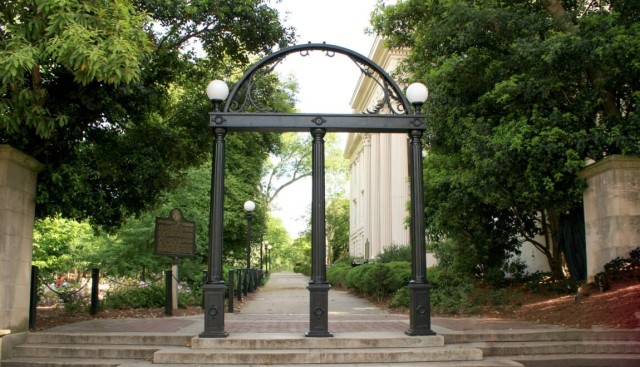Do you prefer the activity, culture, and nightlife of the big city or the laid-back, quieter lifestyle of a small town? Perhaps you chose your current location based on other factors, such as proximity to work. If recent developments have changed the way you live and work, you might be considering moving from the cities to the suburbs or even a small town.
According to US census data, many millennials are moving out of large cities in favor of small towns. According to the data, nearly 30,000 millennials moved out of cities in 2018 – the fourth year in a row that the population of young adults in cities has declined. The fastest-growing cities and towns, according to the Census Bureau, include Herriman City, Utah; Leander City, Texas; Leland Town, North Carolina; and Williston City, North Dakota.
As telecommuting becomes more common for some companies, there’s greater flexibility for renters looking to move outside of the city center. A recent CoStar report found that some companies are considering adding small satellite offices in suburban areas to minimize employees’ commute times and time spent on a crowded bus or train. As these options become available, commute times might become less of a factor when choosing a location in which to rent.
Small towns and suburban cities often provide larger apartments, which could mean more space for a home office. Rent in smaller towns and cities is often less expensive, as well. Some smaller cities and towns might offer a lower cost of living. Whatever the reason, small towns are gaining in popularity, so let’s explore some of the data behind the trend as well as things to know about small-town growth.
What Is a Small Town?
A small town is defined by the US Census Bureau as having a population between 25,000 and 50,000 residents. It is slightly smaller than the average suburb, which is defined as a community within an urban area with between 30,000 and 70,000 residents.
By comparison, a city has a core population of 50,000 or more. Large cities have populations of 250,000 or more. Mid-sized cities have between 100,000 and 250,000 residents, and a small city has less than 100,000 residents.
Unlike a rural area, which is located outside of an urban cluster, a town is located within an urban cluster. An urban cluster, according to the census bureau, consists of communities outside of urban area that have a population of less than 50,000 but more than 2,500.
Towns usually have some form of self-government, unlike a census designated place (CDP). A CDP is a community without defined boundaries or a functioning governmental structure.
Moving Trends in Small Towns and Cities
According to the Census Bureau, almost 31 million people moved last year within the United States, or almost 10 percent of the population. CoStar researchers looked at apartment search trends to see where people were moving and discovered that those searching in small cities, towns, and suburbs increased in the last year.
| Small City/Town | Population | Search Increase |
| Crescent City, CA | 7,600 | 39% |
| Sonora, CA | 4,200 | 59% |
| Truckee, CA | 16,000 | 67% |
| Ukiah, CA | 16,000 | 71% |
| Yuba City, CA | 67,000 | 48% |
| Worcester, MA | 185,000 | 30% |
| Greenfield, MA | 17,400 | 25% |
| Pittsfield, MA | 42,500 | 31% |
| Bloomington, IL | 78,000 | 155% |
| Charleston-Mattoon, IL | 64,000 | 146% |
| Decatur, IL | 71,000 | 176% |
| Corning, NY | 11,000 | 23% |
| Hudson, NY | 6,000 | 61% |
| Gloversville, NY | 15,000 | 52% |
| Paris, TX | 25,000 | 367% |
| Kerrville, TX | 24,000 | 835% |
| Palestine, TX | 18,700 | 1158% |
In California, Crescent City, Sonora, Truckee, Ukiah, and Yuba City all saw significant increases in search volume. While large cities also showed increases, these increases were smaller. Los Angeles and the Inland Empire both grew by eight percent, Sacramento by one percent, and San Francisco by 13 percent.
Boston searches grew by 19 percent year over year. At the same time, Worcester, a mid-sized city located about an hour southwest of Boston, grew by 30 percent. The small cities of Greenfield and Pittsfield, both roughly two hours from Boston, grew by 25 percent and 31 percent respectively.
Bloomington, Illinois, located about two hours southwest of Chicago, increased by 155 percent. Charleston-Mattoon, a micropolitan area spanning two counties, is located about two hours west of Indianapolis. Searches in this region increased by 146 percent. Decatur, Illinois, located two hours northeast of Saint Louis, increased by 176 percent over last year.
In New York, some of the highest-searched cities include Corning, Hudson, and Gloversville. Corning is located roughly two hours southwest of Syracuse in the Finger Lakes region. Hudson is located about 30 minutes south of Albany, while Gloversville is about 45 minutes northwest of Albany.
Big cities in Texas continued to see strong growth, including Dallas-Fort Worth (16 percent), Houston (9 percent), and Austin (2 percent). But Paris, Texas, a small city located roughly an hour and 45 minutes northeast of Dallas, saw an increase of 367 percent. Kerrville, located about an hour northwest of San Antonio, increased 835 percent. Palestine, Texas saw the largest increase at 1,158 percent. Palestine is located about two hours southeast of Dallas.
Tips for Moving to a Small Town
If you are thinking about moving to small town, suburb, or city, you might be wondering how to find a rental home. You may have fewer options, but you should be able to find rental properties in the area of your choice. If you are searching on Apartments.com, you have the added ability of being able to draw your search area. On your phone under “Search Tools,” select “Map View.” This will pull up a large map of your search area. Click on the pencil, then use your finger to draw the area you are interested in. On your computer, just click the pencil icon on the map and use your mouse to define your search area. Doing this allows you to define your borders where there may not be any, such as in a CDP, or to choose several small communities in the same area.
Moving to a Small Town from the Big City
If you’re used to city life, the slower pace of a small town might be the first thing you notice. Apartments.com conducted a survey asking renters about their impressions of small towns, and “slower pace” was one of the traits mentioned by several of those surveyed. Other things to consider before moving to a small town or suburb is having fewer options when it comes to schools, museums, and theaters.
Survey participant Wagland1989 said, “One of the biggest adjustments, moving from a large city to a small town, is not having all of the options you had in the city. There are fewer schools. You might have one good school, where in a large city there are often several to choose from. A small town has limited resources and fewer options for kids.”
“I prefer the activity in a big city,” Bativia1594 added. “The nightlife, the museums. But there’s a bigger sense of community in a small town. There’s more open space and nature, and that’s important to me. You feel like you are part of the community in a small town, and not just one of thousands.”
In addition to a slower pace and fewer resources, you might discover less nightlife. Businesses might close earlier than you are used to, and there may be fewer restaurants, theaters, and entertainment venues than you’d typically find in a larger city.
What to Expect When Living in a Small Town
Many of the renters surveyed agreed that the misconceptions about living in a small town aren’t always accurate. One of the most common misconceptions is that you won’t find anything to do. And while the pace is slower in a small town, that doesn’t mean small-town life is boring.
Survey participant Wagland1989 said, “One big misconception about small towns is there’s nothing to do. Some think in big cities, there’s so much to do, so much nightlife, but that isn’t always the case.”
Many small towns have charming downtown areas, providing quaint local shops and restaurants to explore. Small towns are known for hosting a wide variety of festivals and events, as well. Since many of these communities are located near large parks, hiking and outdoor activities are often popular.
“In a small town, there’s more space.” Wagland1980 added. “It’s easier to find a rental with a back yard. Also, small towns are quieter and there’s less congestion.”
FurbabyMom agreed. “I would consider moving to a small town because you would know everybody and everybody would know you. That would be pretty cool.”
While there are things to do in small towns, you may find fewer options. For Wagland1989, “The unappealing part of living in a small town is having less to do. I was more open to city life prior to this year because there are so many museums, parks, great schools. That changed after the pandemic.”
“Being close to the city but not exactly in the city is ideal,” Klone0703, who lives in a suburb, added. “Right now, I am close to a lot of things but not in the hub of things. I really enjoy the suburbs because you don't have to drive super far to get to downtown, but you're still away from it.”
Jott54 added, “I’ve lived in many different places, including big cities. I just moved to a small town and I really enjoy it. I like the privacy. It’s quieter. I don’t mind a commute if I can be around fewer people.”
How to Find a Neighborhood in a Small Town
While it may be more difficult to find a neighborhood in a small town or suburb, knowing your priorities will help. Do you need to be close to a certain school? Are you interested in living where you’ll have the best route for commuting?
The filters on Apartments.com will help you find rentals with your desired features and amenities. You can find rentals within a certain price range, by the number of bedrooms, and the type of rental (apartment, house, condo, or townhome). Click the filter button to the right of the search bar and you can select amenities, filter by square footage, choose by star rating, or add your own keywords. Under “Search Tools,” you can look for apartments near restaurants, transit stops, and college campuses.
If you are looking for a walkable small town with sidewalks and bike lanes, websites like walkfriendly.org are a great resource. If you look at a town’s local guide on Apartments.com (located under “Search Tools”), you’ll see the area’s walk, transit, and bike scores, along with other important details like rent trends, schools, and points of interest. If you’ll be commuting to work, be sure to check out the Plan Your Commute tool to find an apartment along your desired route.
No matter where you choose to find your next apartment, your home is what you make it. Whether you choose a small town, a mid-sized suburb, or the heart of the big city, determining what features and amenities are important to you will help you find the ideal rental in any location.






